'To build the garden of the future I had to rip up the rule book'
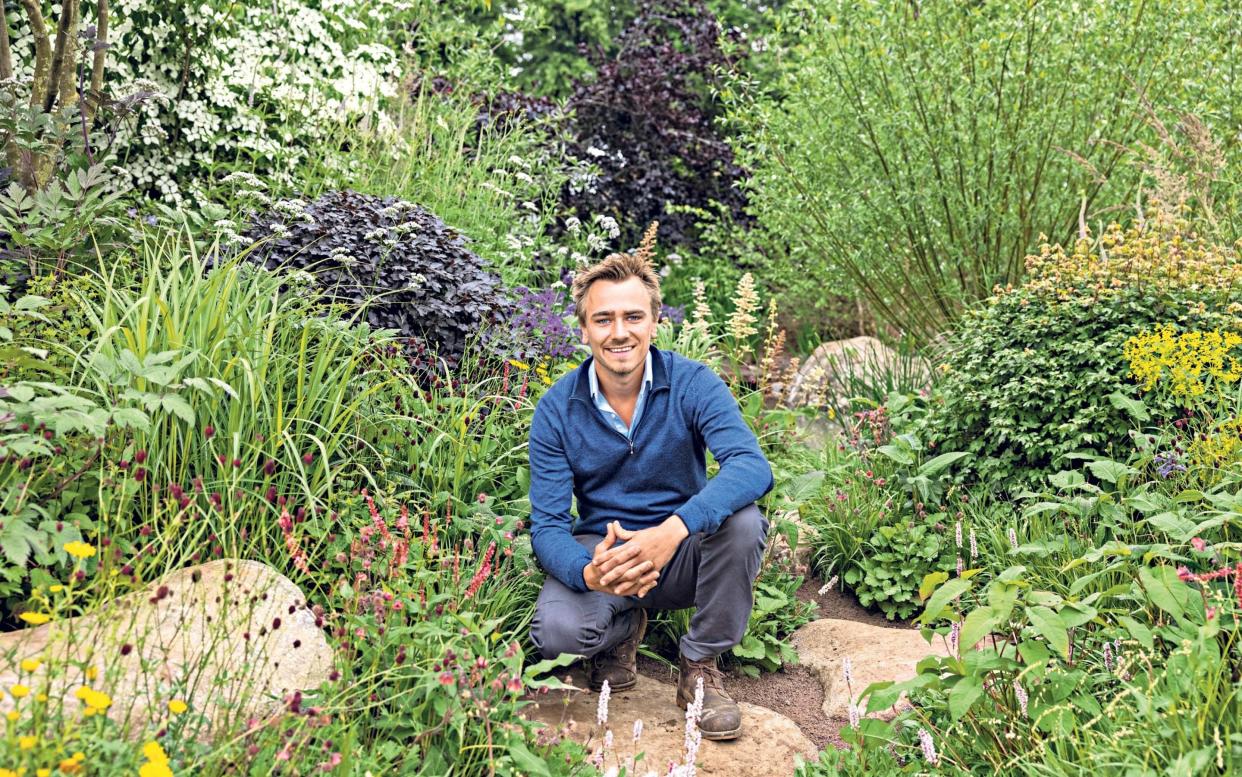
“In January 2020, Australia was on fire, the UK was under water and climate change was at the front of everyone’s minds,” says Royal Horticultural Society ambassador and nurseryman Jamie Butterworth. “Covid-19 intervened and has dominated the news, but pretty much every month since has broken [climate change] records. The question is, what can we, as gardeners, do about it?”
In response to an increasingly urgent situation, the RHS, together with Butterworth, decided to build the RHS Garden for a Greener Future. Launching at Hampton Court Palace Garden Festival this week, this looks at the challenges of climate change and considers ways in which gardeners can both mitigate it and survive it.
“We know that gardens are already valuable,” says Leigh Hunt, principle horticultural adviser at the RHS. “In terms of the environmental benefits that they deliver, gardens already help to cool air and prevent flooding. But we are expecting more extreme heat events, more extreme rainfall events; there will be milder winters and drier, warmer summers. So what do we do?
“This erratic weather is going to fundamentally change the climate as we understand it and choosing the right plants is increasingly essential. Big, long-lived plants are particularly important and we have to think, ‘What will grow in my garden? Will it last?’ Plant selection is key.”
According to Butterworth, gardeners and nurseries have a moral obligation to lead the fight against climate emergency and he designed this “perfectly imperfect” garden to communicate what is possible, laying out the compromises and solutions and seeding new ideas for how our gardens may need to look in the future.
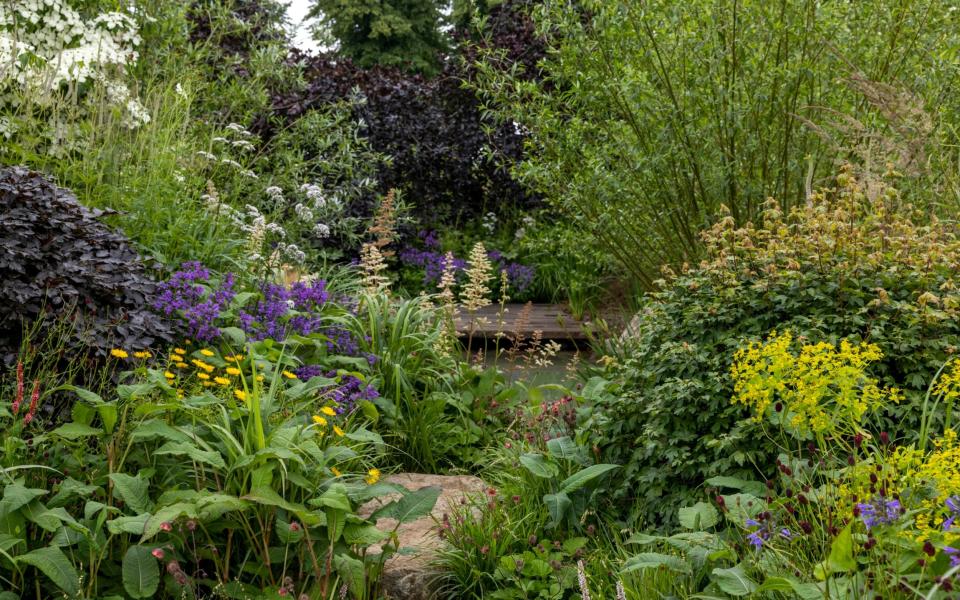
The underlying principle of the project is, therefore, sustainability. It involves considering how the environmental footprint of gardening can be reduced: taking a critical look at what goes in – such as water, fuel, chemicals and hard landscaping – and what comes out in terms of emissions, run-off and waste.
It also considers how gardens can help in other ways, operating as net carbon sinks – absorbing more carbon dioxide from the atmosphere than they release – and their role in keeping the immediate environment habitable.
The garden is conceptual, even futuristic in places, and the scale is huge. Large, mounded earthworks undulate through a landscape that is broken up with dry riverbeds and residual pools, designed to capture and store water from winter rain and make it available during periods of summer drought.
Compared with Butterworth’s very old-school horticultural background, this new project is positively controversial: there is no planting scheme, no hard landscaping to speak of and none of the usual level of precision that an RHS project would usually entail. “It is unlike a normal show garden. It rips up the rulebook and I’ve never had so much difficulty getting the ideas out of my head and into reality,” he confesses.
“There is no plan. We are working with whatever plants are ready at the nursery at the time, whatever looks best. It’s an organic process, so we are rolling with it and seeing what happens.”
Rather than being influenced by prominent designers and being guided by RHS traditional practice, the concept here is led by science, informed by experimentation, resilience, adaptation and the drive to evolve techniques in anticipation of unknowable changes.
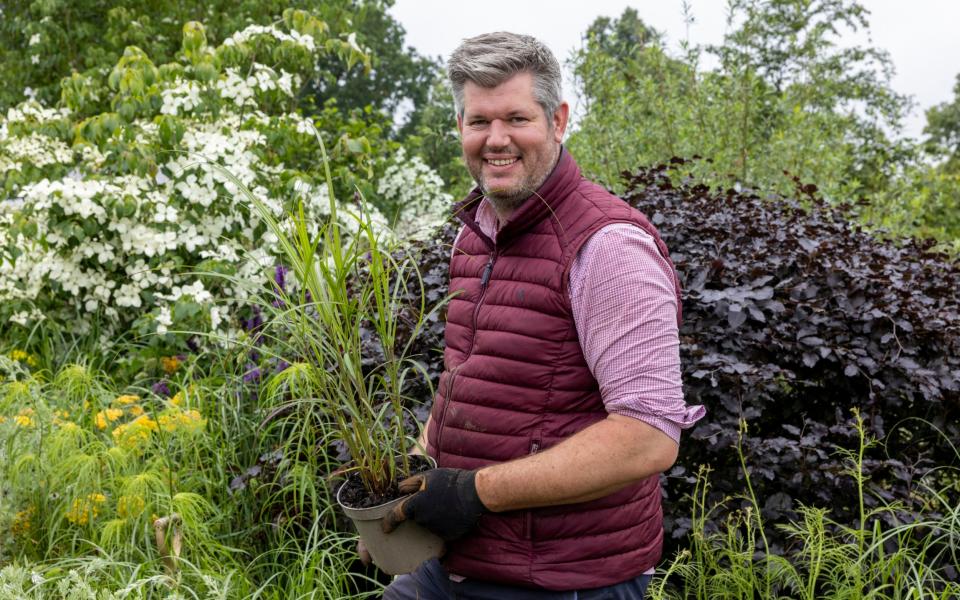
The hope is that it will be a rich source of ideas for everyone, from balcony gardeners to landscape architects but, by show standards, the plants are uncharacteristically honest: unsprayed, shaggy and going to seed in places. But this is, after all, reality.
“I like to think of it as nature on a tea break,” says self-styled freelance plant choreographer, John Cunningham, who is helping with the build. “Rather than an unrealistic vision of eternal youth and catwalk perfection, it’s a levelling down moment; like superstars and ordinary people of all ages sitting around having a coffee.”
A clash between traditional British gardening and the unstoppable change at a global level seems inevitable, but this project proposes a bold update to the accepted ideas of horticultural perfection, and shows the way towards a new normal.
“The days of manicured topiary and a neatly trimmed lawn are gone,” says Butterworth. “The way forward is an acceptance of how things are. We need to decrease rather than increase inputs such as tap water, fertiliser and fuel for mowers, and this means tolerating some level of imperfection.”
Learn to adapt

Adapting to growing conditions and experimenting with different situations is second nature to many gardeners. Yet we have also become accustomed to a high level of control. In a world where plants cannot be forced to perform with lashings of water, nutrients and chemical sprays, there will need to be an improved understanding of the interaction between physiology and environment, and more reliance on personal judgment.
“Being a gardener is more like being a vet than a doctor,” says Cunningham. “You have to use your experience and intuition, rather than trusting the subject to tell you what is wrong.”
RHS water management specialist Janet Manning agrees. “We can’t depend on diaries that tell us what to do and when any more,” she says. “This May was one of the wettest on record, but May 2020 was the driest and sunniest; we have to learn how to adjust to the conditions that are thrown at us.”
Over time, the garden has evolved in a process that seems to be more akin to scientific experimentation than to conventional garden design. It has become more textured and nuanced and the focus has been fine-tuned to address water use, aridity and different microclimates.
Aware that creating a show garden – even one with a positive environmental message – is not a particularly sustainable activity, however, Butterworth and his team have done everything that they can to minimise its impact and include ideas that are also usable at home. And, though flying by the seat of his pants, Butterworth is positive about the future possibilities of gardening.
“I’m particularly excited by the landforms, as I have never seen it done,” he says. “Drainage ditches and trenches to hold water are practical in commercial agriculture; the challenge is how to make it work on a domestic level.”
Rather than bringing fresh soil in, the team constructed the sweeping landforms from material dug out when they were forming gullies. This approach both reduced transport emissions and shows how soil from, say, building a house extension, could be deployed elsewhere in the garden.
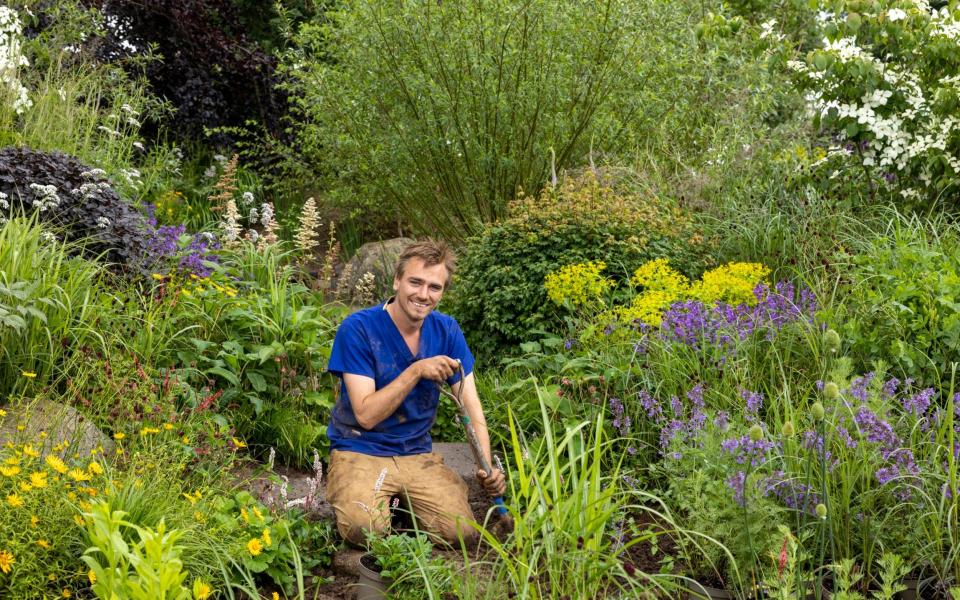
There is no environmentally unfriendly cement; the deck is made from the recycled wooden mats used to support the legs of large cranes, while the liner of the reservoir is made from recycled tyres. Even the underground wine-cooler is low-impact, providing chilled drinks without need for a fridge or electricity.
The plants throughout have been chosen to be successful in the changed UK climate and are planted into microclimates for which they are adapted.
Tough, drought-resistant varieties such as grasses, sanguisorba, phlomis, acanthus and salvias grace the bank-tops that shrug off the deluge and stand proud of subsequently stored water, while the stream-bed is home to plants that don’t mind wet feet and flooding, such as Iris sibirica.
Liberal use of hardy, reliable trees such as beech, birch and Acer campestre cast shade and create the sort of cool, ferny nooks that will be so desirable for both plants and people in the future. And large areas have no plants at all.
“It’s OK to have gaps in a scheme and areas of void,” says Butterworth. “You have to think ‘What would nature do?’ There is a tendency to shoehorn plants into spaces where they don’t want to be. Under a low tree where there would normally be leaf mould and debris, people often put in huge ferns; these look great for the show, but in a real-life situation they would be dead in a month.”
Let nature play out
This acceptance of nature and awareness of the interactions within an environment illustrate an important point. Trees capture carbon over a long period of time, while the combination of shade and transpiration creates a cool microclimate.
But their very presence alters the local environment for the better. As the leaves and twigs fall, they are decomposed and pulled into the ground through the action of invertebrates, which has the dual effect of capturing carbon underground and creating healthy, aerated soils.
“It’s about understanding the natural processes and letting them play out,” explains Manning. “Air spaces in the soil provide essential oxygen for the roots and space to store the water when it rains. The roots can then use this, which saves the gardener work and resources. Root depths vary enormously – deeper roots will reach more moisture, but they need a well-drained soil to make sure the oxygen is available, too.”
Charming and relaxed, Butterworth’s perfectly imperfect garden is complex yet relatable. An inviting, detailed and pleasant space that is filled with ideas addressing the challenges before us, offering thoughtful solutions both for mitigating the impacts of climate change and for working with whatever comes our way. It provides a new perspective, where we can work alongside nature, rather than fight for outdated, unattainable and environmentally expensive ideals.
“We hope that it will start conversations and that it will allow members of the public to take key aspects of the garden home with them, whether this is a few planting ideas or larger elements of fundamental design,” says Butterworth.
“We don’t know precisely what the future holds, but we need to think ahead and plan ahead, learn and adapt. Every day is a school day for a gardener.”
Planting for the future
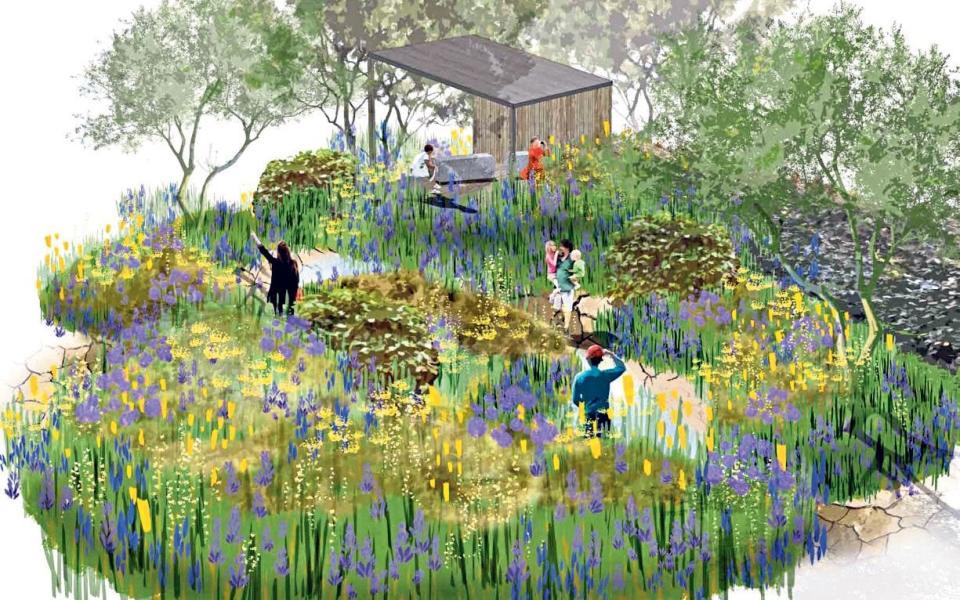
Remember “right plant, right place” and don’t fight nature. Use microclimates and choose plants that are tough and can withstand the conditions you have.
Faced with drought, heat, wind or wet, help plants survive by amending the local environment. Raised beds will ameliorate winter wet while planting a shelter belt can minimise wind damage. Visit rhs.org.uk/advice for lists of plants that will tolerate specific conditions.
Choose plants with more than one purpose – herbs such as oregano are edible, ornamental and attract wildlife, as do fruiting trees.
Grow perennial vegetables such as rhubarb, watercress and sea kale, rather than struggle with sowing annual seeds in difficult or unpredictable spring conditions.
Accept that the traditional manicured lawn has had its day. Plant a mixed sward of grasses and meadow species – and don’t cut it too short. Alternatively, swap it for a herbaceous border or gravel garden.
Choose trees that are hardy and well-adapted to extremes. In dry areas plant evergreens such as arbutus, hollies and palms, including Trachycarpus fortunei. Wet and windy locations need robust plants such as Amelanchier, Norway maple, Scots pine and lime.
Tips for a greener garden
Use local materials where possible. Whether as mulch or landscaping material, recycle what is already on the site rather than throwing it away or bringing in new.
Capture and store rainwater in water butts. Visit mains2rains.uk for advice on how to improve water management.
Minimise hard landscaping. Producing and transporting sand, cement and hardcore generates carbon emissions while the resulting hard surfaces contribute to rainwater run-off.
Green gardens trump hard surfaces – choose hedges over fences, grow climbers up walls and plant trees or large shrubs where there is space.
Pile on the organic matter. Spreading mulch will keep the soil healthy, help plants grow and reduce water loss.
Make compost at home from garden and kitchen waste. Always buy peat-free compost.
For more ideas visit rhs.org.uk/advice/gardening-for-the-environment


